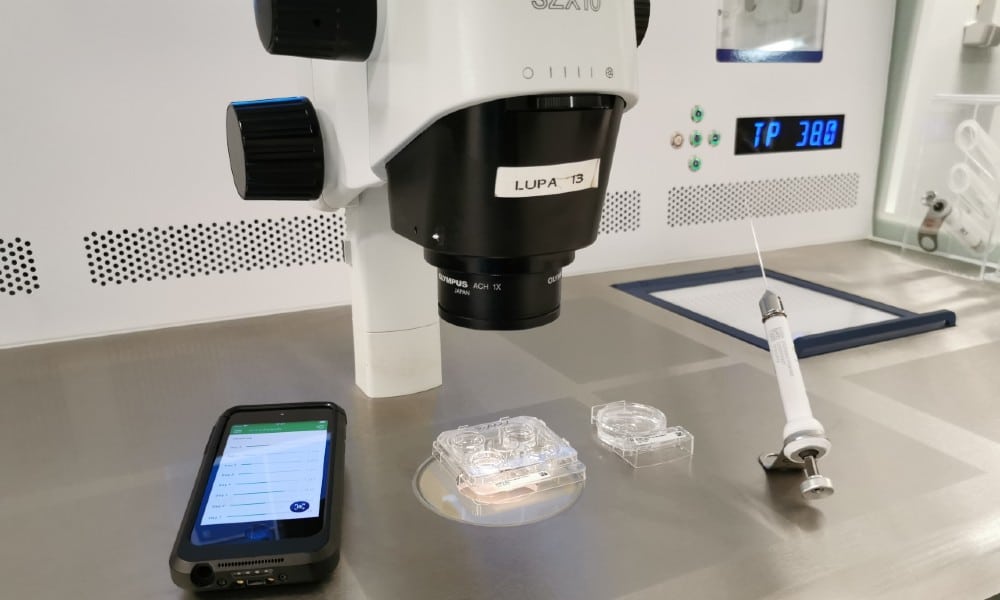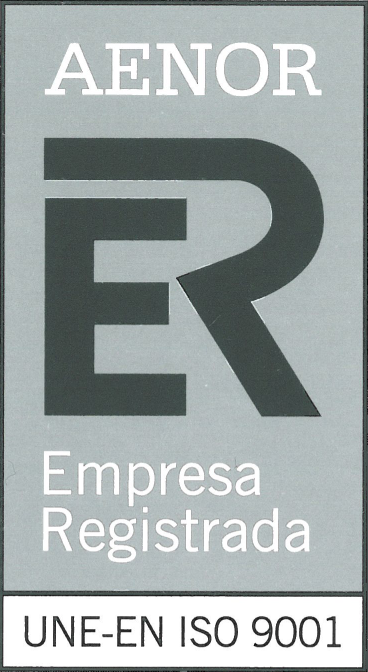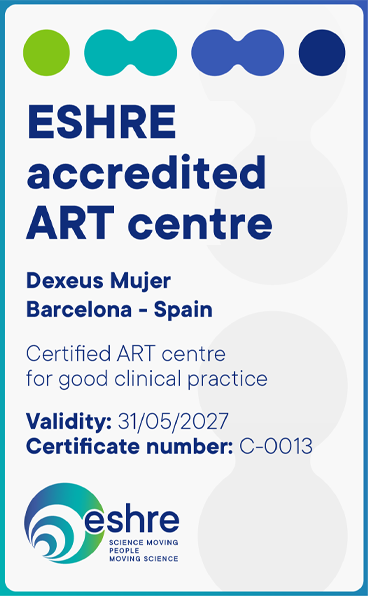Dynamic embryo monitoring (DEM)
All our In Vitro Fertilisation and Ovodonation treatments include embryo incubation with dynamic monitoring (Embryoscope® or Geri®).
When we carry out an IVF cycle there is a key step which, in many cases, will determine the success of the treatment: the development of the embryos. Once the eggs have been inseminated by ICSI, they will remain between 1 and 5 days in a special incubator where they will develop until the moment of their transfer or cryopreservation. This entire process is carried out in our IVF lab under the careful monitoring and experience of our embryologists.
At Dexeus Mujer we are well aware of the concerns that may arise during this stage of your IVF cycle. What if it doesn’t work? What if something goes wrong? What if the outcome is a multiple pregnancy? In our eagerness to improve our technology and in order to help you fulfil your dream to become a mother, we have incorporated the most innovative technology in terms of embryo incubation and monitoring into our IVF laboratory.
This new and revolutionary incubation system guarantees the best conditions for the development of the embryos and is equipped with a camera that allows us to observe their evolution in real time from fertilisation until they are transferred or frozen.
What is DEM?
It is an embryo culture and selection method equipped with an image capture system.
Fertilisation and embryo development up to the third day of In Vitro culture (D0-D3).
EmbryoScope™: Uninterrupted embryo culture and dynamic monitoring.
Dynamic monitoring of embryo development up to the blastocyst stage (D3-D5).
EmbryoScope™: Uninterrupted embryo culture and dynamic monitoring.
Benefits
- DEM improves the culture conditions:
The embryos do not leave their optimal incubation conditions at any time and are not exposed to environmental changes, such as changes in temperature, light, etc., which provides great benefits for embryo development compared to traditional incubators. - It facilitates embryo selection:
This technology can collect images of the embryos every 15 to 20 minutes providing more information and helping us select the best embryo to transfer. - It improves the outcome of the cycle:
Uninterrupted embryo culture and dynamic monitoring has been shown to statistically increase success rates in certain cases. - It increases the number of selective embryo transfers:
Being able to select the embryo most likely to implant increases the number of selective single embryo transfers, thus reducing the number of multiple pregnancies, which are very common in IVF treatments. - It can obtain images of the first days of embryonic development of the transferred embryos:
Once the embryo transfer has been performed, we will provide you with a video with the first images of your future baby’s life, its biological beginnings, and its development in the IVF lab.
What is the best treatment for me?
If you don’t know which treatment is best suited to you, try our online pre-diagnosis.



